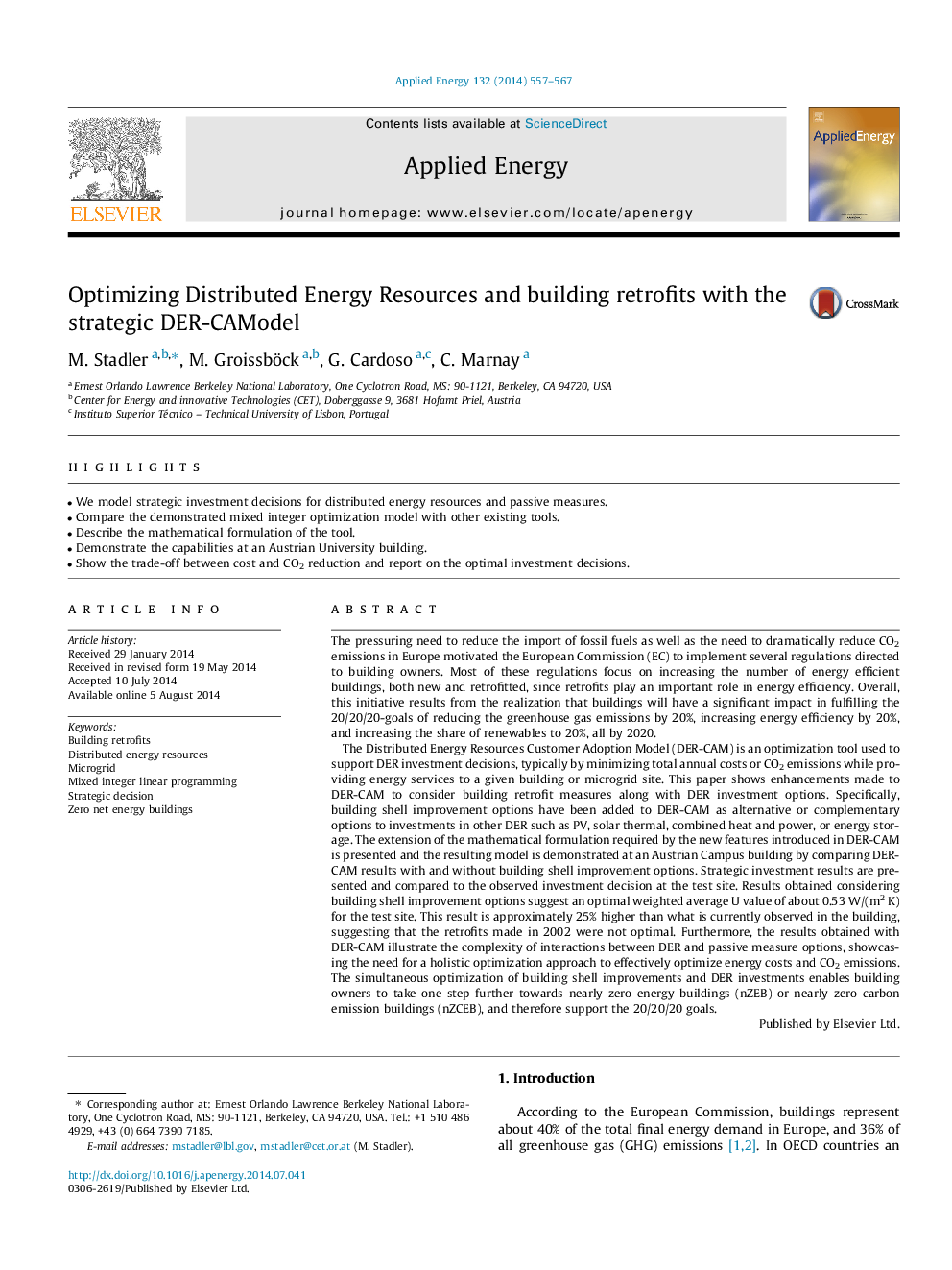| Article ID | Journal | Published Year | Pages | File Type |
|---|---|---|---|---|
| 6689915 | Applied Energy | 2014 | 11 Pages |
Abstract
The Distributed Energy Resources Customer Adoption Model (DER-CAM) is an optimization tool used to support DER investment decisions, typically by minimizing total annual costs or CO2 emissions while providing energy services to a given building or microgrid site. This paper shows enhancements made to DER-CAM to consider building retrofit measures along with DER investment options. Specifically, building shell improvement options have been added to DER-CAM as alternative or complementary options to investments in other DER such as PV, solar thermal, combined heat and power, or energy storage. The extension of the mathematical formulation required by the new features introduced in DER-CAM is presented and the resulting model is demonstrated at an Austrian Campus building by comparing DER-CAM results with and without building shell improvement options. Strategic investment results are presented and compared to the observed investment decision at the test site. Results obtained considering building shell improvement options suggest an optimal weighted average U value of about 0.53Â W/(m2Â K) for the test site. This result is approximately 25% higher than what is currently observed in the building, suggesting that the retrofits made in 2002 were not optimal. Furthermore, the results obtained with DER-CAM illustrate the complexity of interactions between DER and passive measure options, showcasing the need for a holistic optimization approach to effectively optimize energy costs and CO2 emissions. The simultaneous optimization of building shell improvements and DER investments enables building owners to take one step further towards nearly zero energy buildings (nZEB) or nearly zero carbon emission buildings (nZCEB), and therefore support the 20/20/20 goals.
Keywords
Related Topics
Physical Sciences and Engineering
Energy
Energy Engineering and Power Technology
Authors
M. Stadler, M. Groissböck, G. Cardoso, C. Marnay,
